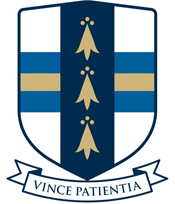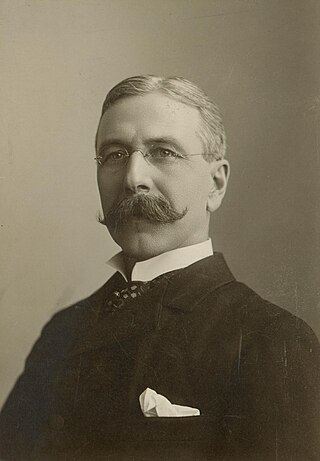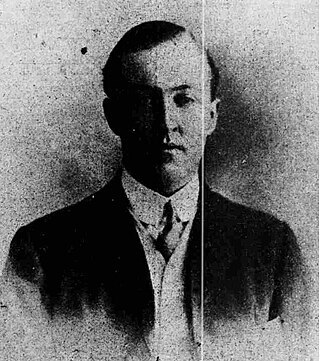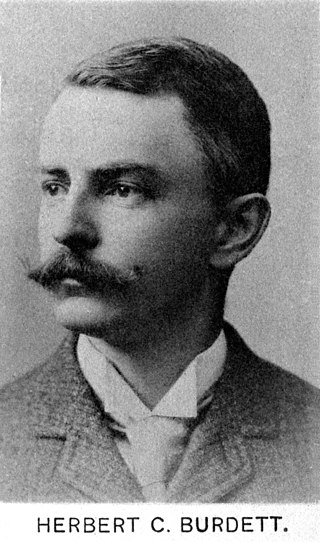External links
- Submarine Boys Series at Henry Altemus Company
- Works by Victor G. Durham at Project Gutenberg
 The Submarine Boys Series public domain audiobook at LibriVox
The Submarine Boys Series public domain audiobook at LibriVox - Works by or about Victor G. Durham at Internet Archive
| Author | Victor G. Durham |
|---|---|
| Country | United States |
| Language | English |
| Genre | Young adult, adventure, war fiction |
| Publisher | Henry Altemus Company |
| Published | 1909–1920 |
| Media type | |
| No. of books | 9 |
The Submarine Boys, by Victor G. Durham, is a series of adventure books for boys, published by Henry Altemus Company, Philadelphia, Pennsylvania, from 1909 through 1920. The series featured three sixteen-year-old boys and their underwater adventures.
Victor G. Durham was most likely a pen name, possibly of H. Irving Hancock. [1] [2] [3] He is also referred to as "Lieutenant-commander Victor G. Durham" [4]
Characters in the series include: David Pollard, an 'innovator'; Jacob Farnum, a shipbuilder; Jack Benson, the captain; and Hal Hastings, Eph Somers and Williamson, all crew.
Submarines in the series include the Pollard, the Farnum, the Benson, the Hastings, the Somers and the Spitfire.
Physical Review is a peer-reviewed scientific journal established in 1893 by Edward Nichols. It publishes original research as well as scientific and literature reviews on all aspects of physics. It is published by the American Physical Society (APS). The journal is in its third series, and is split in several sub-journals each covering a particular field of physics. It has a sister journal, Physical Review Letters, which publishes shorter articles of broader interest.

Sir Hugh Seymour Walpole, CBE was an English novelist. He was the son of an Anglican clergyman, intended for a career in the church but drawn instead to writing. Among those who encouraged him were the authors Henry James and Arnold Bennett. His skill at scene-setting and vivid plots, as well as his high profile as a lecturer, brought him a large readership in the United Kingdom and North America. He was a best-selling author in the 1920s and 1930s but has been largely neglected since his death.

Harrie Irving Hancock was an American chemist and writer, mainly remembered as an author of children's literature and juveniles in the late 19th and early 20th centuries, and as having written a fictional depiction of a German invasion of the United States.

Pforzheimer House, nicknamed PfoHo (FOE-hoe) and formerly named North House, is one of twelve undergraduate residential Houses at Harvard University. It was named in 1995 for Carol K. and Carl Howard Pforzheimer Jr, major University and Radcliffe College benefactors, and their family.

William Herbert, 1st Earl of Pembroke, 1st Baron Herbert of CardiffKG PC was a Tudor period nobleman, politician, and courtier.
Douglas Edward Macdonald Hastings, known as Macdonald Hastings or Mac Hastings, was an English journalist, author and war correspondent. He wrote for Lilliput magazine under the pseudonym Lemuel Gulliver.

Twyford School is a co-educational, private, preparatory boarding and day school, located in the village of Twyford, Hampshire, England.

Nontheist Quakers are those who engage in Quaker practices and processes, but who do not necessarily believe in a theistic God or Supreme Being, the divine, the soul or the supernatural. Like traditional Quakers, also known as Friends, nontheist Friends are interested in realizing peace, simplicity, integrity, community, equality, love, joy, and social justice in the Society of Friends and beyond.

Harry Burns Hutchins was the fourth president of the University of Michigan (1909–1920).

The Office of Mayor of Winchester is the second oldest mayoralty in England, dating back to the period when Winchester was the capital of Wessex and England. The Mayor of Winchester thus stands second only to the Lord Mayor of the City of London in the order of precedence of civic heads.
Grace Harlowe is the protagonist and eponym of four series of books for girls, published by Altemus between 1910 and 1924. At least some volumes were reprinted by Saalfield Publishing. The High School Girls Series, College Girls Series, Grace Harlowe Overseas Series, and Grace Harlowe Overland Riders Series were written by Josephine Chase, under the pseudonym Jessie Graham Flower.

Grace Mann Brown was an American writer and spiritual leader. Her work was related to the New Thought Movement, Divine Science and Christian Science. Much of her work focused on spirituality, metaphysics, mysticism, esoteric and occult sciences.

Robert Pollard (1755–1838) was an English engraver and painter.

St John Hutchinson KC was a British barrister and Liberal Party politician.
Joseph Kay (1775–1847) was an English architect, particularly active in the early years of the 19th century, and associated with the layout of central Greenwich and with Hastings. He was one of the original members of the Royal Institute of British Architects, and was elected a fellow in 1834.
Pollard's Lilliputian Opera Company was series of professional children's troupes, first established in Launceston, Tasmania, in May 1880. Established by James Joseph Pollard, over the next thirty years several members of the Pollard family operated troupes under the same or similar names, travelling through Australia and New Zealand and later the Orient and North America.

Jacob Javan Durham was an American minister, educator, debater and orator, and the founder of a college. He was a Baptist minister in South Carolina, and the founder of Morris College in 1908. He was a member of the board at Morehouse College and an officer in state and national Baptist conventions.
Frank Gee Patchin (1861–1925) was an American author of children's books. He was born in Wayland, New York. He is known for his series Battleship Boys and Pony Rider Boys. Patchin published more than 200 adventure books, many using various pseudonyms including Victor Durham and Jessie Graham Flower. He also wrote for the Edward Stratemeyer Syndicate.
John Hovyngham, also written Honyngham or Ovyngham, was an English clergyman, notary, diplomat and Archdeacon of Durham.

Herbert Channing Burdett (1855–1891) was an American architect trained in the office of Henry Hobson Richardson who, in a brief career, established himself as a successful designer of Shingle Style and Richardsonian Romanesque buildings in western New York. With his partner James Herbert Marling (1857–1895), Burdett designed several public buildings in Buffalo, New York and a number of residential properties for the leading citizens of Buffalo, Woodstock, Ontario and Burlington, Vermont. Owing to his premature death, Burdett is little remembered today outside those areas where his known buildings still survive.